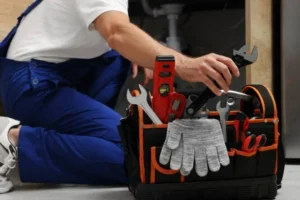Indoor plumbing is something we rarely stop to appreciate, until it fails. But have you ever wondered when this life-changing invention first appeared? The answer takes us back thousands of years and across civilizations that understood the value of water, sanitation, and convenience long before modern technology.
Ancient Beginnings: The First Known Plumbing Systems
The earliest evidence of indoor plumbing dates back over 4,000 years. Archaeologists have uncovered advanced drainage systems in the Indus Valley Civilization (around 2500 BCE), where homes had bathrooms with water channels connected to centralized drainage.
Similarly, in Minoan Crete (around 1700 BCE), palaces such as Knossos boasted flushing toilets and clay pipes, an innovation centuries ahead of its time. The ancient Egyptians also used copper pipes to transport water in their pyramids and temples.
Roman Engineering: The Blueprint for Modern Plumbing
No civilization left a greater mark on plumbing than Ancient Rome (c. 500 BCE – 476 CE). The Romans built massive aqueducts, some stretching over 50 miles, to deliver fresh water to cities. Public baths, fountains, and even private homes of the wealthy were supplied with running water. Rome’s underground sewer system, the Cloaca Maxima, is still partially in use today, an engineering marvel nearly 2,000 years old.
The Long Pause: Decline During the Middle Ages
When Rome fell, much of its plumbing knowledge disappeared in Europe. During the Middle Ages, sanitation standards declined drastically. Chamber pots and open sewers replaced the sophistication of Roman systems, leading to poor hygiene and deadly outbreaks like the Black Death in the 14th century, which killed an estimated 25–30 million people.
The Modern Era: Plumbing Returns Indoors
The revival of indoor plumbing began in the 16th and 17th centuries with inventions like Sir John Harington’s flushing toilet in 1596. However, widespread adoption didn’t happen until the 19th century, driven by public health concerns and urbanization.
By the mid-1800s, cities like London and New York were constructing underground sewer systems to combat cholera and typhoid outbreaks. In the U.S., the first integrated indoor plumbing system was introduced in 1840 at the White House, during President Martin Van Buren’s term.
By 1900, only about 10% of U.S. homes had indoor plumbing. Today, that number has skyrocketed to nearly 100% in developed countries, with the World Health Organization estimating that over 74% of the global population now has access to safely managed sanitation.
Why Indoor Plumbing Changed the World
The invention of indoor plumbing wasn’t just about convenience; it was about survival. It drastically reduced disease, improved hygiene, and supported population growth in rapidly expanding cities. In fact, the U.S. Centers for Disease Control and Prevention (CDC) ranks sanitation, including indoor plumbing, among the top 10 public health achievements of the 20th century.
Final Thoughts
So, when was indoor plumbing invented? While ancient civilisations laid the foundation thousands of years ago, the systems we recognise today have only become standard in the last 150 years. From clay pipes in Mesopotamia to modern smart toilets in Japan, plumbing has not only transformed daily life but also extended human lifespans and improved global health.
Next time you turn on the tap or flush the toilet, you’re experiencing the legacy of one of humanity’s greatest inventions, indoor plumbing.









